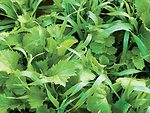Editors' Picks
2022 National Cover Crop Summit
Announcing 2022 National Cover Crop Summit Speakers
Attendees will have the opportunity to learn about seeding covers, the economics of cover crop use, using cover crops in an integrated pest management program and more during the virtual summit, to be held March 15-16, 2022.
Read More




